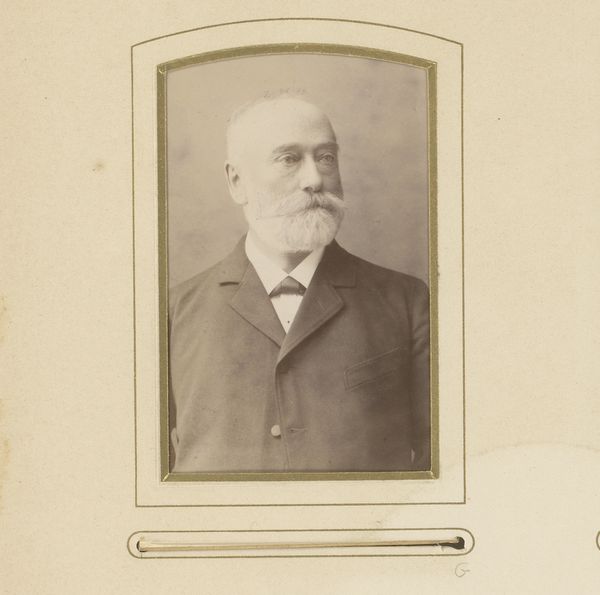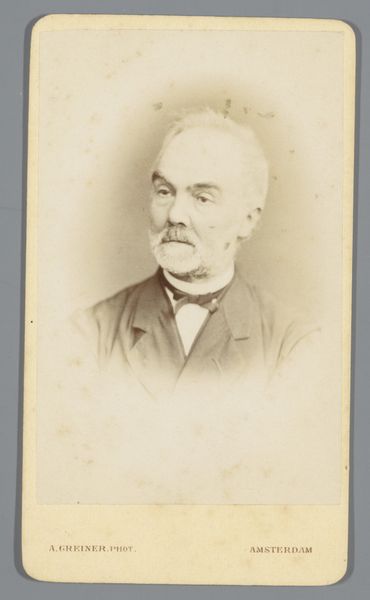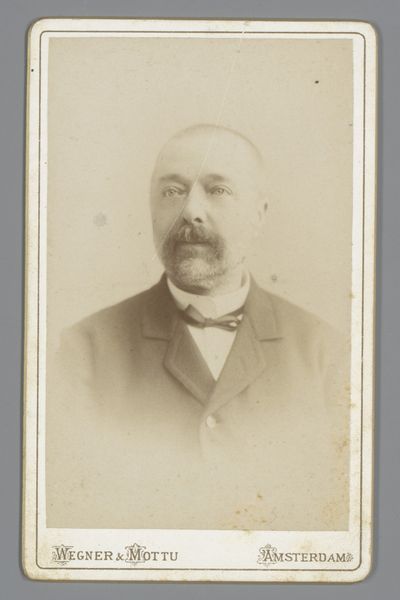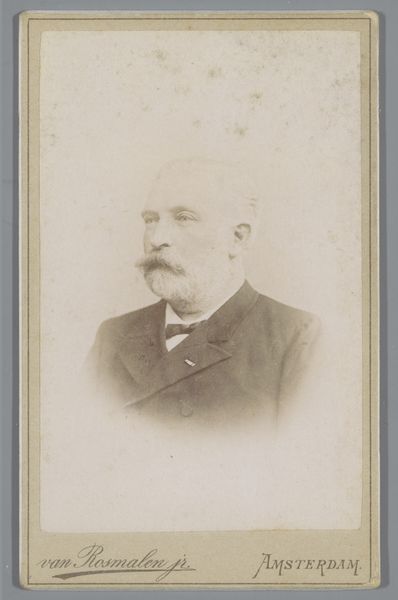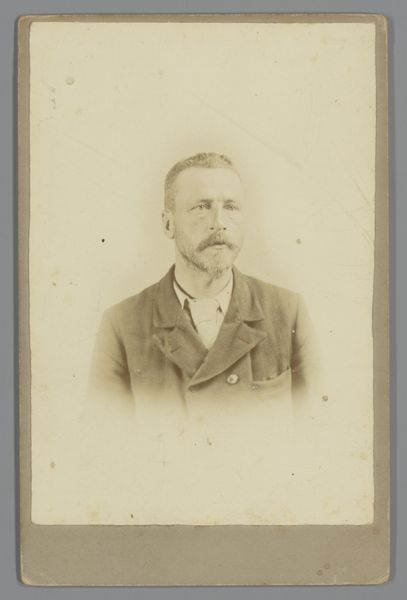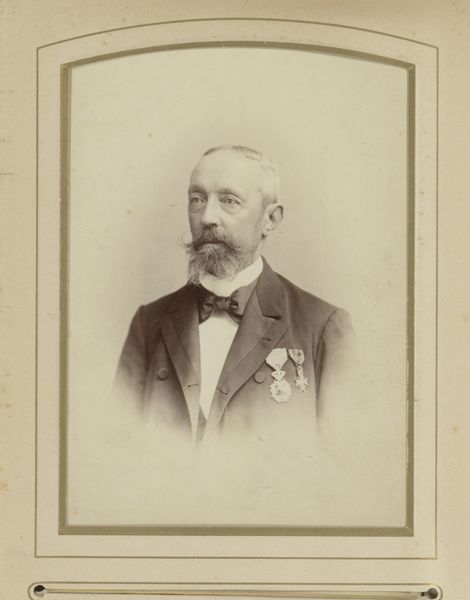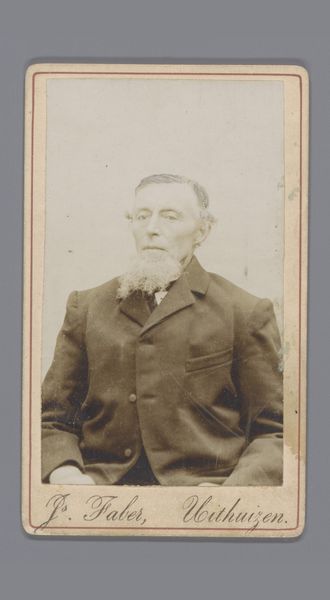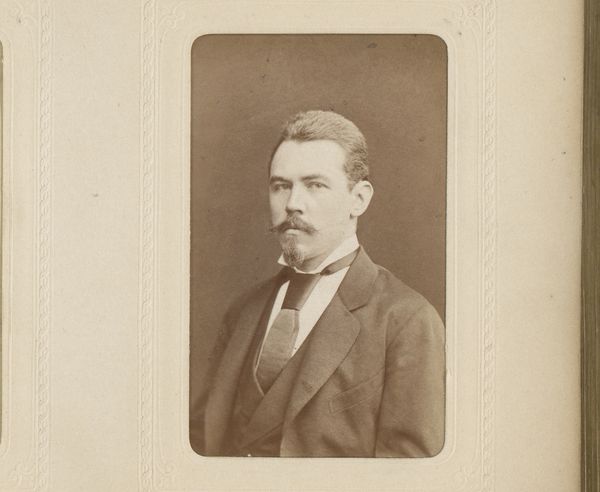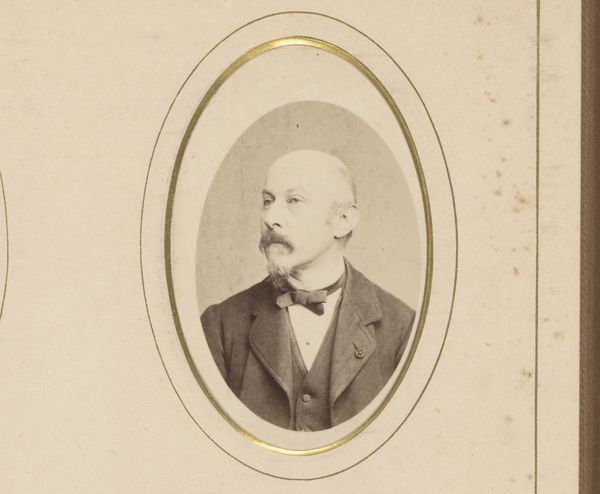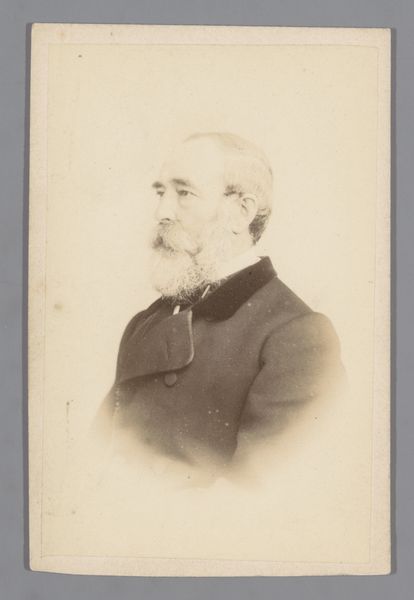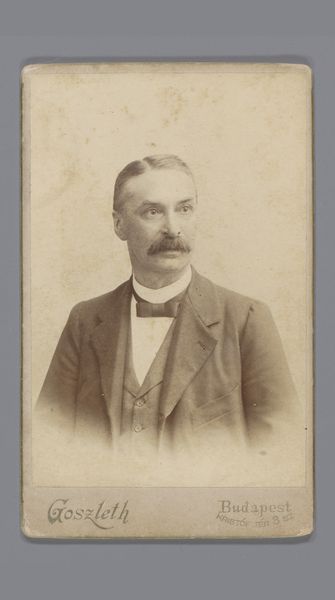
print, daguerreotype, photography
#
portrait
# print
#
daguerreotype
#
photography
#
realism
Dimensions: height 101 mm, width 64 mm
Copyright: Rijks Museum: Open Domain
Curator: Up next we have, a vintage portrait photograph dating from between 1894 and 1900, titled "Portret van Hein Pannekoek" by Emile Muns. Editor: The sepia tones lend it an air of solemnity. Note the stark contrast around the subject. It almost feels… ghostlike. Curator: It's a fascinating artifact when you consider the context. Photography at the time was still developing. We see this daguerreotype—a unique image printed directly onto a silvered copper plate. Laborious, requiring specialized knowledge and equipment to create the physical print. Editor: Let’s not overlook the formality in the subject's posture and attire. His poised look seems very intentional, his bearing controlled and rigid. Look at the symmetry and geometric pattern, which comes through even the soft focal length and contrast. Curator: Exactly. And this links to the social role of portraiture back then, particularly for the middle class or academics—individuals trying to capture and transmit an idea of authority. His bearing is quite in line with realism, he presents his actual self. The print also testifies to the studio and the photographer that manufactured this piece. It suggests this picture must have been part of a service provided by professional photographers. Editor: The photograph’s reliance on light and shadow is striking. Note how the soft focus and the lighting creates almost an atmospheric blurring around the subject’s presence. The lines may be clean but overall the aura is softer. Curator: That atmospheric quality does bring the man into sharper focus in a way. Consider also, how readily this image could be reproduced. The ease with which prints can enter mass distribution influences how we engage with this visual history today. Editor: The tonal range is unexpectedly effective; the photographer did amazing work considering his constraints! It elevates what could have been a simple portrait into something really enduring, from both a structural and textural standpoint. Curator: Absolutely. The material reality of its production, the photograph studio as a workplace… all these things infuse our reading of the image. It shifts the focus from individual genius to labor, production, and circulation. Editor: In a very different way, seeing it today, our relationship to the geometric arrangement of dark and light, continues to provide a direct, unmediated engagement that speaks to fundamental relationships. I still think that is relevant, too.
Comments
No comments
Be the first to comment and join the conversation on the ultimate creative platform.
